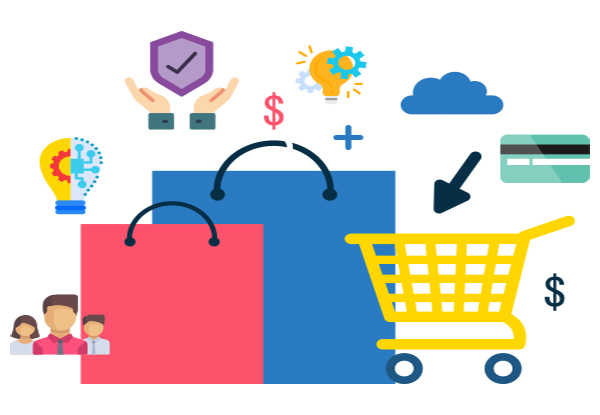
According to Oberlo, global online sales will reach $6.4 trillion by 2024. If you are still considering whether to start a Retail business and try retail software development services, then the prospects for new players are very bright, but there are nuances that we will discuss below.
The world continues to become more digitally connected. And the retail industry is no exception. What can we expect to see in the retail industry in 2023–24? At Intelvision, experts are always looking ahead to identify the trends that will shape the future. In this article, they will explore the top retail tech trends to watch for this year and beyond.
What Trends Will Shape Retail Businesses in 2023–24
The trends that have emerged and developed in the era of COVID-19 are pushing retail businesses to develop and accelerate digital transformation. Companies need to embrace these changes and keep their outlets up-to-date and tech-savvy with modern retail solutions. So, what are the trends in general? Let’s uncover this question together!
Mobile Commerce
People are increasingly shopping on smartphones or tablets. According to Statista, by the end of 2021, about 73% of purchases in the world were made from mobile devices.
Nowadays, mobile devices are used to explore products and reviews, even if you plan to purchase from a desktop. How to use mobile trends in the retail sector:
- the interface and functionality of the site must be initially adapted for mobile devices;
- consider the features of purchases from mobile devices;
- conduct usability testing to analyze whether it is convenient to make purchases from a smartphone in your online store;
- allow paying for goods using Apple Pay, Google Pay, and more.
Omnichannel Retail
Today, searching on the Internet is not limited to websites. Someone is subscribed to the brand’s social networks, some customers use mobile apps, and others are subscribed to newsletters.
It is important in 2023 to provide the target audience with maximum points of contact with the brand and to synchronize the digital channels with each other, maintaining the unity of communications and combining different channels into one system for a positive customer experience.
Artificial Intelligence
A personalized experience is important for 71% of shoppers. That is exactly what Artificial intelligence can offer. Earlier, product recommendations were selected manually and were often irrelevant. Now they are generated automatically and based on the client’s preferences (brands, color, budget, and other factors) and purchasing history. In addition to recommendations, AI helps to track warehouse inventory, optimize marketing strategies, and improve service and communications.
Metaverse
Metaverse is a virtual world where people can interact with each other and a range of digital objects and experiences. As virtual reality technology continues to advance, more and more retailers are turning to the Metaverse as a way to engage with customers in a new and exciting way. According to JPMorgan, an American investment company, in 2023 the annual income from goods sold in the metaverse could grow to $1 trillion. Retailers can create immersive, interactive experiences that allow customers to virtually try on clothes, and test out products in the Metaverse.
Augmented Reality
AR apps have been experimented with virtual “try-before-you-buy” experiences ranging from previewing furniture and products in your home to trying on virtual clothes. Virtual try-on experiences are the most popular use case for AR in the retail sector. Allowing consumers to preview products to scale digitally in their own homes or bodies, and then purchasing the physical product.
How Custom Retail Software Solutions Can Help You to Keep Up with Market Trends
To be successful tomorrow and focus on tomorrow today, you need to follow retail trends. Quickly adapting to changes in consumer behavior and technology, you will be able to:
- automate everyday retail operations;
- anticipate customer expectations;
- improve order fulfillment;
- gain competitive advantage;
- serve your customers better and faster, and more.
Many of those trends didn’t originate today. However, the degree of their relevance is gaining momentum every year. You can order custom software solutions that contain AR, VR, and other technologies. This will help you stay afloat in the frenzied race for market dominance, meet the expectations of today’s consumers (including the youth), and skyrocket your sales.
Steps to Create a Custom Retail Software
You’ve decided to develop a unique software solution, but do not know where to start?
1. Choose the right vendor. It is crucial as well as challenging. Your choice will determine how positively a future solution will impact your business.
2. Plan everything. Create a detailed plan and discuss with your vendor the key features your future software should include.
3. Keep supporting and maintaining your digital product. Even if the custom retail software was implemented successfully, it needs constant support and maintenance. It’s better to delegate these tasks to the technical expert or the software provider.
Retail business owners must be prepared to continuously adapt to the changes and the resulting trends if they want to maintain a competitive edge in retail. With the right tools, expertise, and processes, retailers can ensure they are staying competitive in a constantly shifting landscape.
Follow – https://techhipo.com for More Updates

